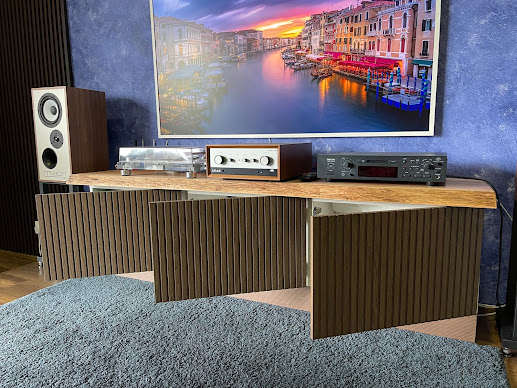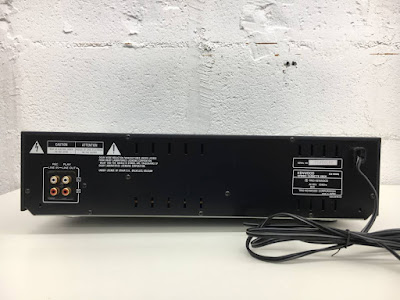Eversolo has become like a house hold brand for the audiophile or to most who wanted a streamer / player for music listening. Eversolo which is a sister company to the renowned Zidoo player that made high end media player for Home Theater. Android based media players has been the preferred O/S for quite a long time. The only limitation is the Android O/S will down sample the hi-res audio or limit it to 48khz. Eversolo has custom its Android to remove such limitation which make this player desirable among audio enthusiast. Practically anything coming out from the Eversolo is lossless and Hi-Res.
On the front of the A8 vs A6 is pretty much no difference except for size difference on the chassis. As expected from the more premium player of A8, the chassis is well build and the weight is quite a bit for such small player. Looking into the belly of the beast will show why the bigger chassis and weight.
Every single inch of space is fully utilized in the chassis. Is well arranged with circuitry separated with divider on each different section of power, digital and analog. The power supply are divided into 2 stages for the digital circuitry and the other the audio circuitry. This is to ensure low noise and high quality audio. The DAC is the AKM Velvet Sound (Verita) DAC. It also features a full DSP Processor with individual configuration profiles for your source of choice (Internal Player, Bluetooth 5.0, USB, Optical 1 & 2, Coax 1 & 2, eARC/ARC).
Looking at the back shows quite a bit more connection compare to the previous A6. The last one there is only HDMI for audio. With the A8, there is HDMI ARC being added on which was something missing from the previous model. This is quite a welcoming feature especially for home user who will be using it with their TV which is quite common for many having the setup in living area. The other good thing to have is the RCA / XLR input as compare to just output on the previous model. This will allow to have audio pass through on the A8. When comes to digital input / output it has covered all basis with Coaxial, optical, HDMI, USB with support of external drive on the USB 3.0 port. Similar with previous model at the bottom of the A8 is able to install SSD drive as internal storage.Additional look the A8 with graphic equalizer. The player is not just about feature and function but it does takes care of the look department. It does fit quite well especially if the unit is use in the living area.
The Eversolo apps which is the main controller of the player is another key success for the player. The mirror function on the apps allow the user to remote control on the player as like the player is held on the hand of the user. What is done on the apps is exact mirror image on the player. The interactive apps is not just user friendly but is also very convenient without the needs of any remote control. Although a remote is still being provided as additional accessories. I guess physical feel of remote is something users always preferred. As an Apple music user, the A8 is a must have with its ability to have Apple music playback directly from its Android. This will means skipping Airplay which does not support Hi-Res. A big plus and there are only 1 other player which has the same capability which is the Fiio R7.
This is another feature which is quite essential with the use of HDMI ARC for 2 channel movies. The A8 has the build in DSP to properly calibrate the necessary audio especially on movies. PEQ, High pass / Low pass filters, gain adjustment, etc. Is pretty much like a standard AVR will have for auto calibration of multi channel surround sound. Is quite a powerful tool to have even is just stereo.
The Eversolo A8 is a piece of hardware to have and easily blend in as well. Even with my selection of theme on the home just fit in nicely. When it comes to the most intrigue part will what about the audio ? I will be thinking back on how the A6 perform compare to the A8. First of all the streaming part with Apple music just blow me away. Is so much smoother with almost no digital glare which was quite obvious in the previous A6. The listening experience is a lot more pleasant to the ears. The fatigue feeling is all gone. Is really nice to play music on it and go about your thing at home. Just perfect for the use and songs changes with just a simple press on the apps on your mobile phone. Definitely a big lifestyle piece. Hooking up the XLR / RCA directly to the amplifier to play back with its internal music player is another notch up from the A6. The sound stage has improve, sound separation is pretty clear, vocal is sharp as ever without the piercing high, even the bass extension is quite a punch on the Mission 700. By passing the internal DAC with USB output to the Leak 230 is not slouch either. The player continue to have the quality it carry from its internal DAC. Anything from FLAC to DSD just plays off nicely without effort. Songs just flows from the A8 as smooth as silk. I am impressed with big improvement from the A6 to the A8. Of course the price is almost 3x the price of A6. It will be the expected performance.
What is the downside, the remote provided is a nice touch but pretty much not needed. With the apps makes the remote totally redundant. The Apple Music apps after being installed on the A8 could not show up on the mobile apps. Not sure the reason, could be a bug. The previous A6 has no such issue. The mobile apps still has the issue of not able to find the player once a while. NAS storage to be added to the player is a bit of a pain. It works sometimes and other it doesn’t work at all. Some files in the NAS for some reason cannot be access although in other player it was working fine.
With the personal experience on the A6 and now the A8, is definitely significant improvement for the Eversolo. Other than the hardware and some software upgrades. The most important of course is the audio quality improvement which a big portion of it. Pleasantly surprised by such a big change with the time difference of the A6 to A8. Have to flip my hat off to Eversolo


























.jpg)
























